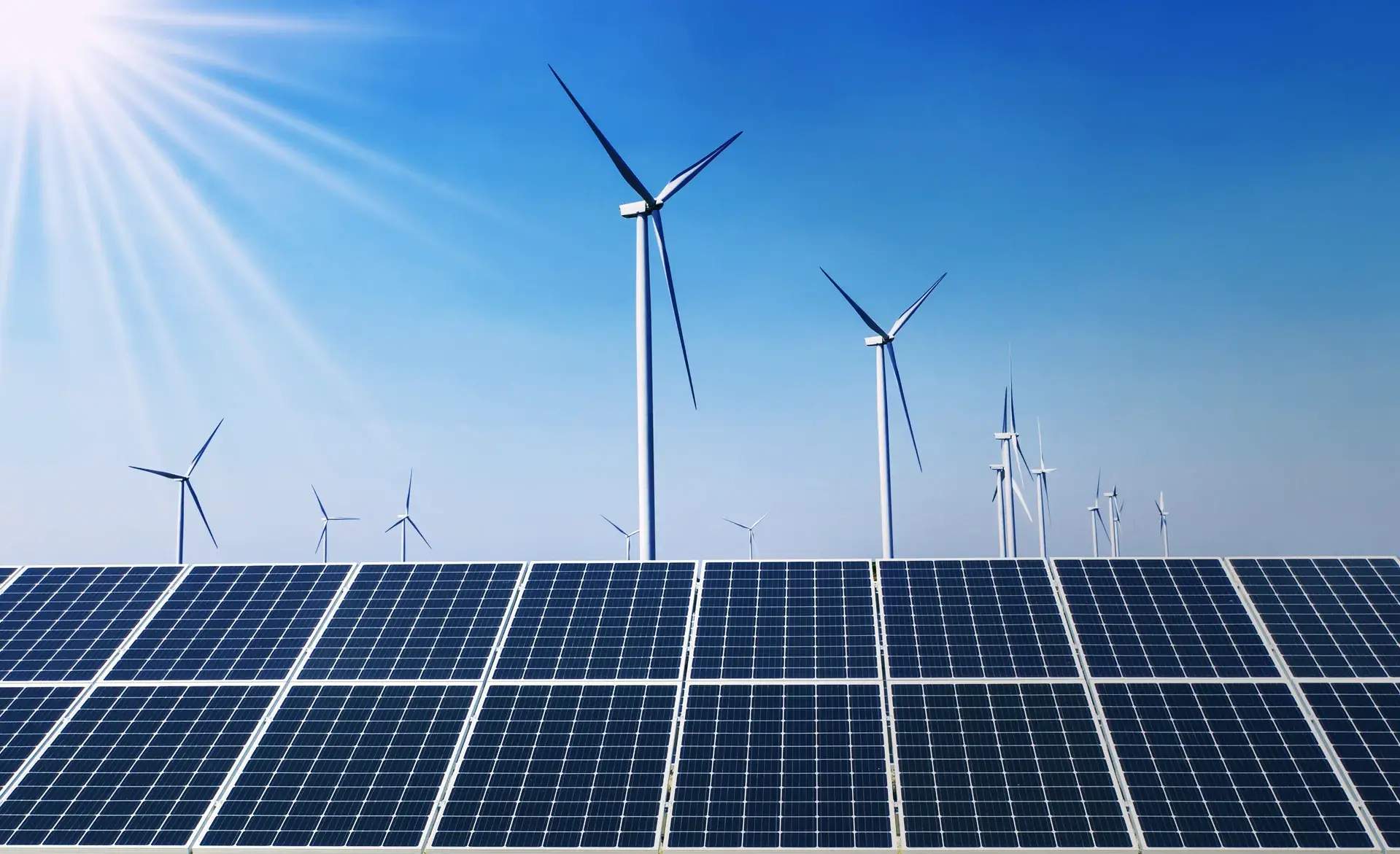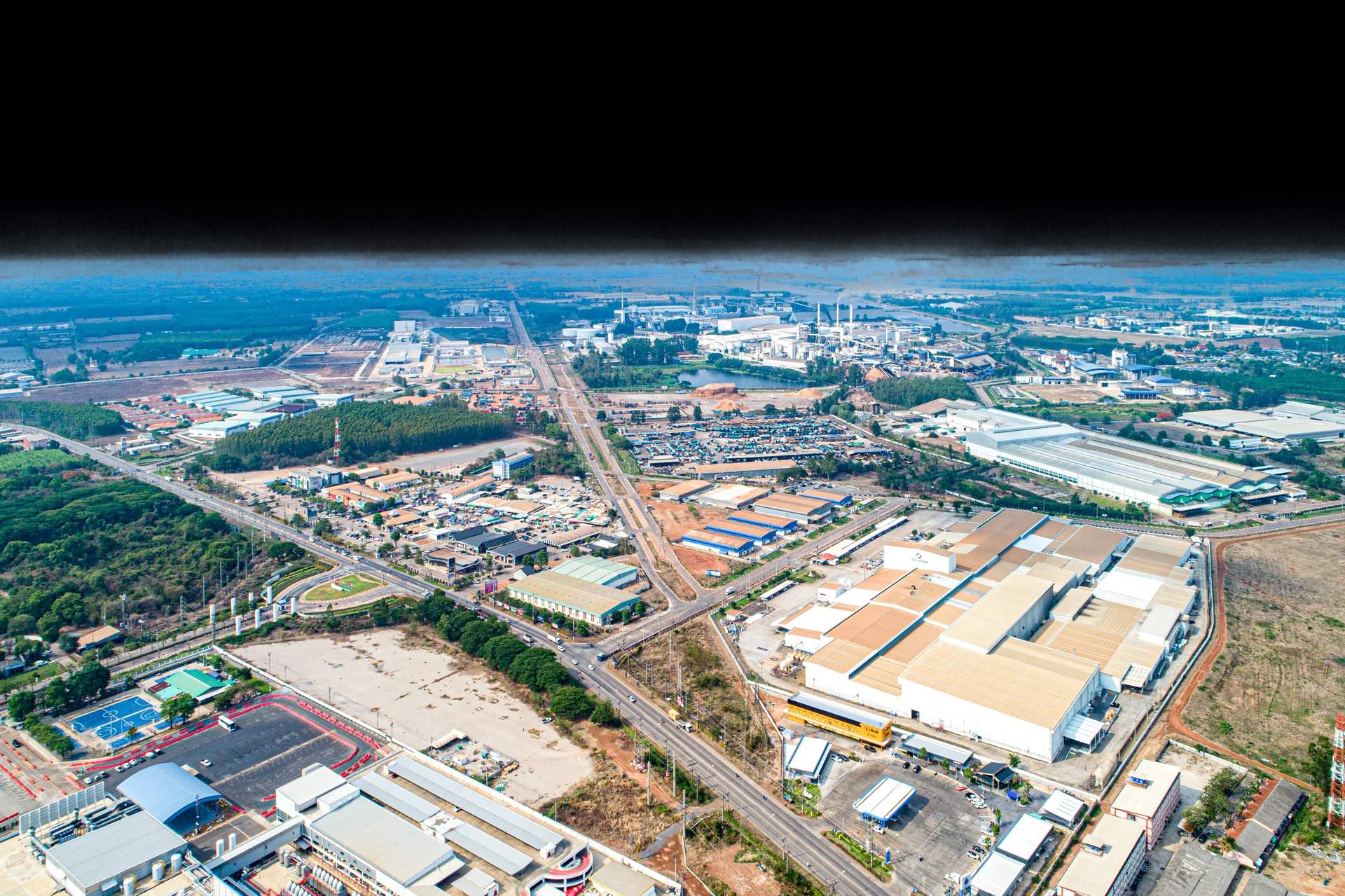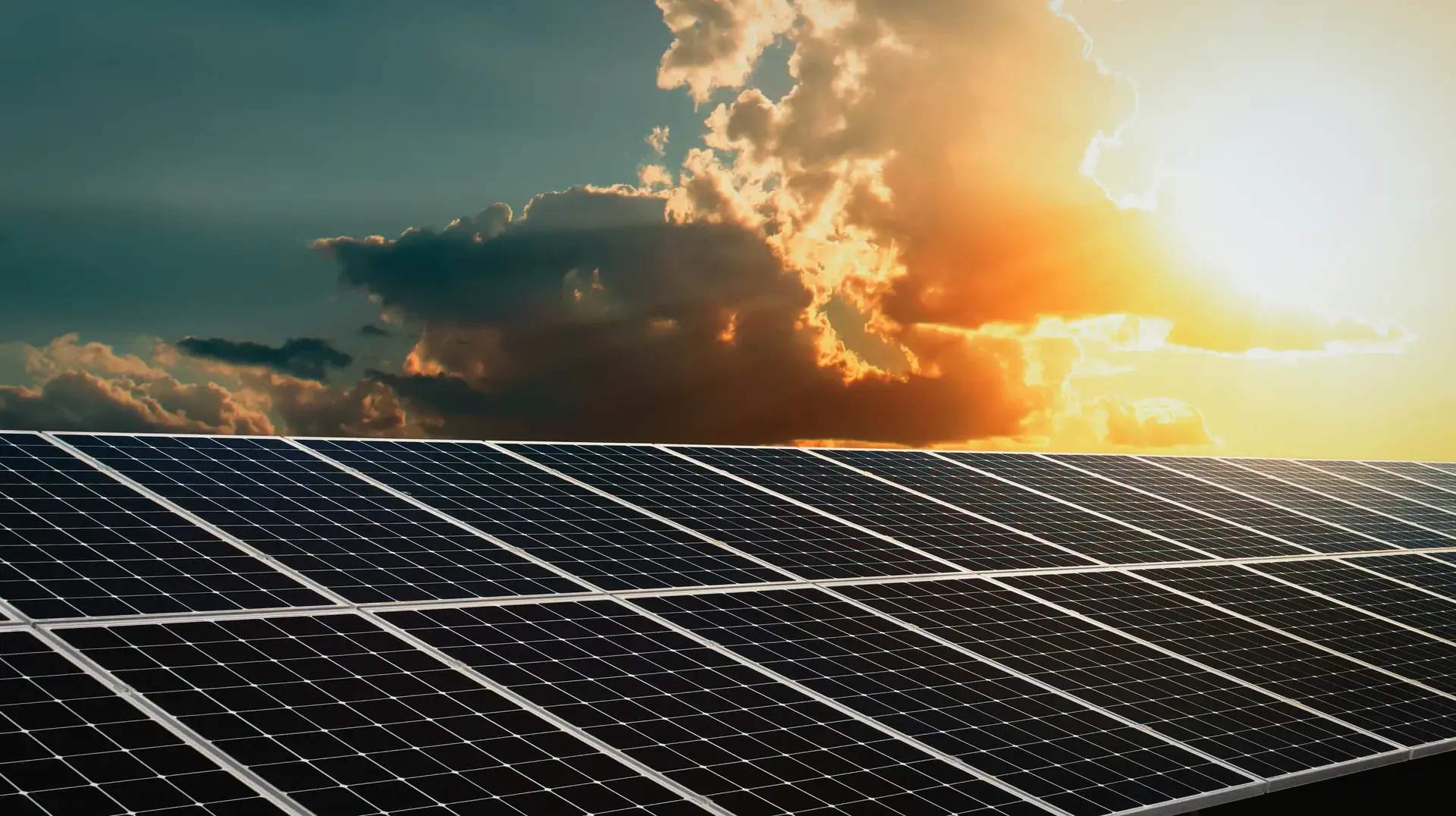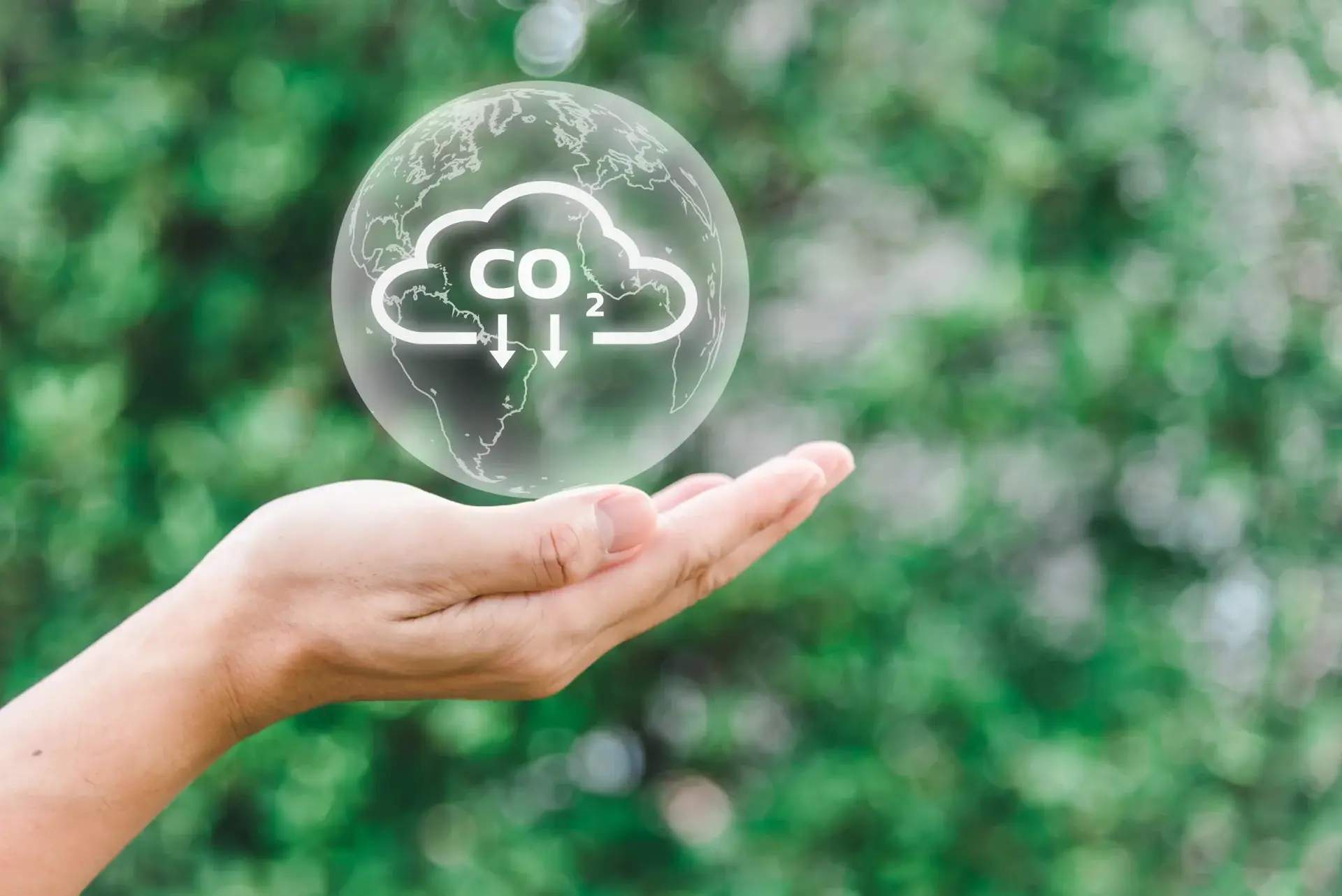Renewable Energy: The Key to Sustainable Growth

As the world faces environmental challenges and the depletion of natural resources, renewable energy has become essential for industries seeking sustainable growth. Amid growing pressure from global warming and increasingly strict environmental regulations, the business sectors, both globally and in Thailand, are transitioning toward the ESG (Environmental, Social, Governance) framework. Thailand has set ambitious goals: achieving carbon neutrality by 2050 and Net Zero Emissions by 2065.
These two goals are driving the industrial sector to gradually shift toward clean energy that delivers long-term efficiency and environmental benefits.
What is Renewable Energy?
Renewable energy refers to energy that is used and will never run out. It can be continuously generated from natural sources such as sunlight, wind, geothermal heat, hydropower, and agricultural residues (such as rice husks, straw, or sugarcane bagasse).
Most forms of renewable energy, such as solar and wind power, fall under the category of “clean energy”, as they do not generate pollution during production. They help reduce greenhouse gas emissions and serve as a strong alternative to fossil fuels, which are a limited energy source with significant environmental impacts.
Examples of renewable energy in use today range from residential solar panels to large-scale wind farms and hydropower plants. These resources demonstrate how renewable energy can meet both economic and environmental needs.
What Types of Renewable Energy Are There?
Renewable energy can be categorized into several types based on its sources. Each type has different potential and suitability depending on how and where it is used.
-
Solar EnergySolar energy can be converted into electricity through a solar cell, which is applicable for both residential and industrial use. Solar power is one of the largest sources of renewable energy and can significantly reduce long-term energy costs for businesses. Today, solar cells come in various forms, such as rooftop solar panels, floating photovoltaics, and ground-mounted solar farms.
-
Wind EnergyWind can be used to generate electricity through wind turbines. When wind flows against the blades, it causes them to spin, converting wind energy into mechanical energy, which is then used to produce electricity. The amount of electricity generated depends on wind speed; therefore, turbines are typically installed in areas with strong and consistent wind, such as highlands or coastal regions.
-
Hydro EnergyWater can generate electricity in a similar way to wind energy. The flow of water creates mechanical energy, which can then be used to produce electricity. The amount of energy generated depends on the volume of water and its flow rate. Hydropower plants, therefore, require locations with large natural water sources or connections to dams to ensure continuous and efficient electricity generation.
-
Biomass EnergyBiomass refers to natural materials such as corn cobs, straw, sawdust, or residues from agricultural and food processing industries. It is a source of renewable energy that helps reduce waste and supports the circular economy. These biomass fuels can generate energy through direct combustion to produce heat, or they can be converted into biogas before being used to generate electricity.Another technology for generating renewable energy from biomass is the Circulating Fluidized Bed (CFB) steam system, which burns biomass under controlled temperature and airflow conditions. This ensures complete combustion and helps prevent pollution.
-
Geothermal EnergyGeothermal energy is the heat stored beneath the Earth’s surface in the form of hot water and steam. It is created when rainwater seeps through cracks in the Earth’s crust and accumulates in underground reservoirs heated by the Earth’s internal heat. These geothermal sources can often be observed as hot springs or boiling mud pools on the surface.Converting geothermal heat into electricity is done by using steam from underground hot water sources to spin turbines connected to generators. The technologies used include:
-
Dry Steam: Utilizes steam directly from geothermal reservoirs.
-
Flash Steam: Pumps high-pressure hot water into a normal-pressure tank to produce steam.
-
Binary Cycle: Transfers heat from geothermal reservoirs to a fluid with a low boiling point, which then separates the steam.
-
In summary, these renewable energy sources not only help reduce environmental impact but also serve as a sustainable alternative for business and industry sectors, especially in an era where sustainability has become a key factor in gaining a competitive advantage.
Advantages and Disadvantages of Renewable Energy from an Industrial Perspective
Transitioning to renewable energy aligns with sustainability goals and Net Zero policies that organizations worldwide are prioritizing. It also offers a way to reduce operating costs. However, while renewable energy presents many advantages, there are still limitations that industries must carefully consider.
Advantages of Renewable Energy
-
Lower Long-Term CostsWhile the initial investment in renewable energy systems, such as installation and land, can be high, over the long term, renewable energy can significantly reduce electricity and fuel expenses, especially for factories with high and continuous energy demands.
-
Reduced Risk from Global Energy Price VolatilityRelying on domestic renewable sources, such as solar energy or biomass, helps reduce the impact of fluctuating global energy prices. It also enables businesses to manage and control their energy usage more easily.
-
Compliance with Environmental StandardsMany multinational companies are setting green energy requirements within their supply chains. Using renewable energy can be a key factor in maintaining and expanding business opportunities.
-
Enhanced Corporate ESG ImageSwitching to clean energy enhances a company’s environmental credentials, fostering confidence among stakeholders, investors, and international markets that emphasize sustainability.
Limitations of Renewable Energy
-
High Initial InvestmentInstalling a renewable energy power generation system, such as solar cells or CFB systems, can have high initial costs.
-
Space and Location LimitationsCertain types of renewable energy, such as wind or hydro power, require large areas for installation to produce electricity at maximum efficiency, so they may not be suitable for factories in urban areas or where space is limited.
-
Intermittency IssuesThe electricity output from some renewable sources, such as solar and wind energy, depends on weather conditions and the time of day. As a result, a backup energy system is necessary to ensure a stable energy supply.
-
Need for Technology and Skilled PersonnelOperating renewable energy systems requires specific technologies and expertise. Regular maintenance and system upgrades are also crucial for maintaining continuous performance and efficiency.
Examples of Renewable Energy Utilization
The industrial sector in Thailand has been increasingly adopting renewable energy to reduce greenhouse gas emissions, control energy costs, and align with ESG frameworks and Net Zero goals. Below are examples of how renewable energy is being utilized in the industrial sector:
-
Many large factories are now utilizing solar rooftops to generate electricity during the daytime, thereby reducing electricity costs during peak load hours and decreasing their dependence on government-supplied electricity.
-
Businesses can sell excess electricity back to the grid through government-supported Net Metering programs.
-
Factories in agriculture and food-related industries can utilize production waste, such as rice husks, bagasse, or corn cobs, as biomass fuel to generate steam and electricity, thereby improving overall waste management efficiency.
-
Using renewable energy can also entitle businesses to tax incentives from the BOI. For example, enterprises that generate electricity from renewable energy sources (excluding waste) can receive up to 8 years of corporate income tax exemption.
Clean Energy is No Longer Just an Option — It’s the Guideline for Modern Industries
Renewable energy is not only a solution to environmental challenges, but also a strategic opportunity for businesses. It helps reduce costs, increase operational flexibility, and build confidence with partners and investors. Investing in clean energy is no longer merely an alternative; it has become a “necessary” guideline for modern industries.
304 Industrial Park not only offers space ready for industrial factory construction, but also stands out with its comprehensive utility infrastructure, which is a crucial foundation for stable and continuous business operations. This includes sufficient water and electricity supply to meet industrial demands, as well as the capability to distribute renewable energy within the park. These features align with the growth direction of modern industries that prioritize sustainability and the environment, industrial green energy, and innovative green logistics practices that enhance overall efficiency.
304 Industrial Park is ready to distribute quality renewable energy, as follows:
-
Hybrid Solar Energy-Biomass Power with a total capacity of 555 MW, divided into:
-
Biomass Electricity: Generated from the largest biomass power plant in Thailand, using agricultural residues, waste from the pulp and paper industry, and fast-growing “energy crops.” Comes with a Renewable Energy Certificate (I-REC). Production capacity: 398 MW.
-
Floating Solar Power: Sourced from the largest industrial-scale floating solar power plant in Thailand’s private sector, located on a 1,200-rai (1,920,000 square meters) reservoir within the park. Production capacity: 157 MW.
-
-
Green Steam from Biomass Power Plants: Ready to distribute directly to a special area prepared to support customers who have specific needs for steam in the production process.
With a strategy focused on meeting energy demands and a customer-centric approach, 304 Industrial Park is ready to be a business partner that grows sustainably alongside every entrepreneur.
Related News & Media
304 Industrial Park
Creating a future-ready ecosystem for businesses, with green energy, complete facilities, and global connectivity.
Contact Us


